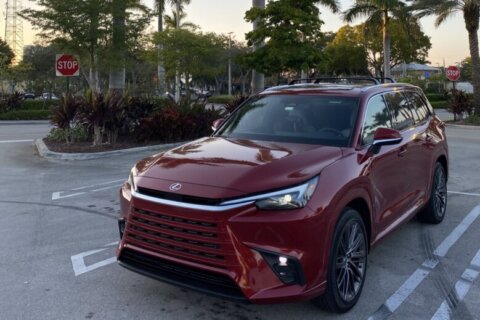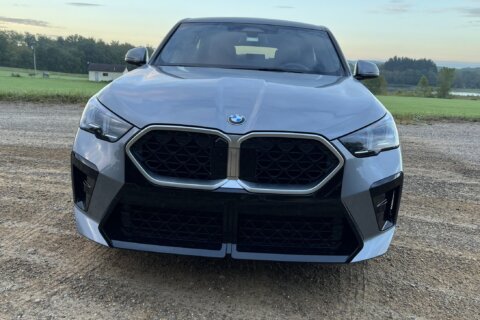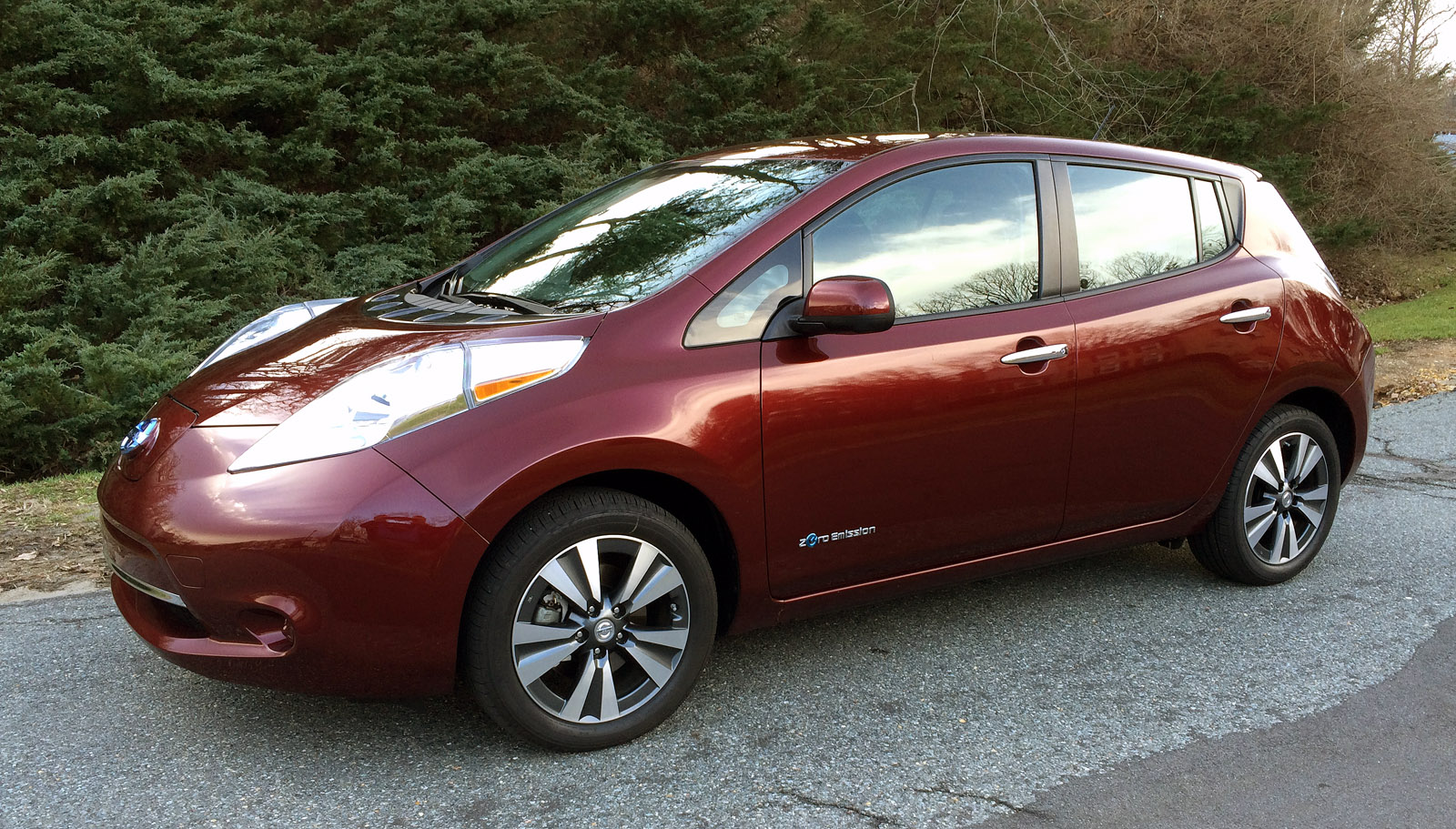
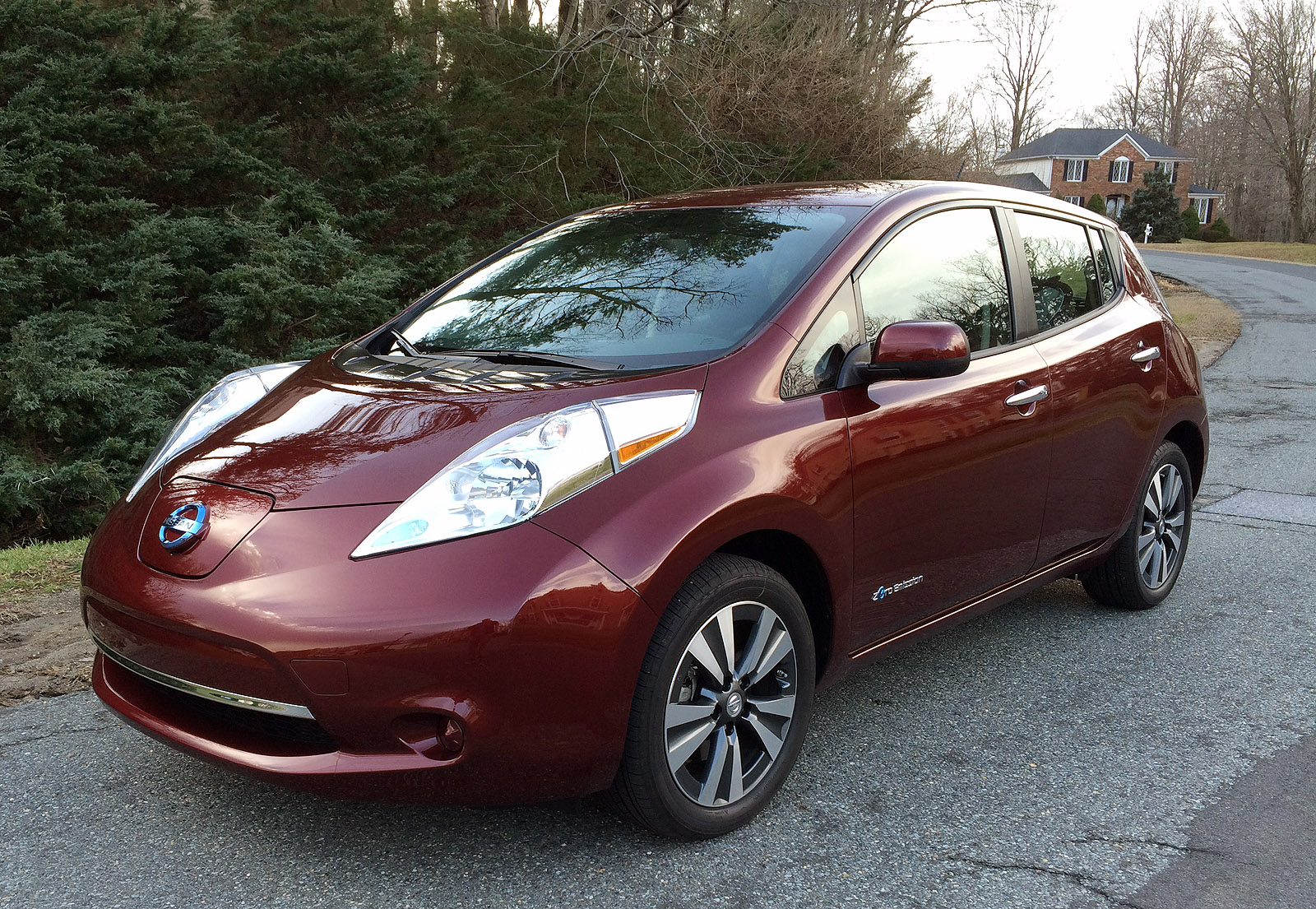

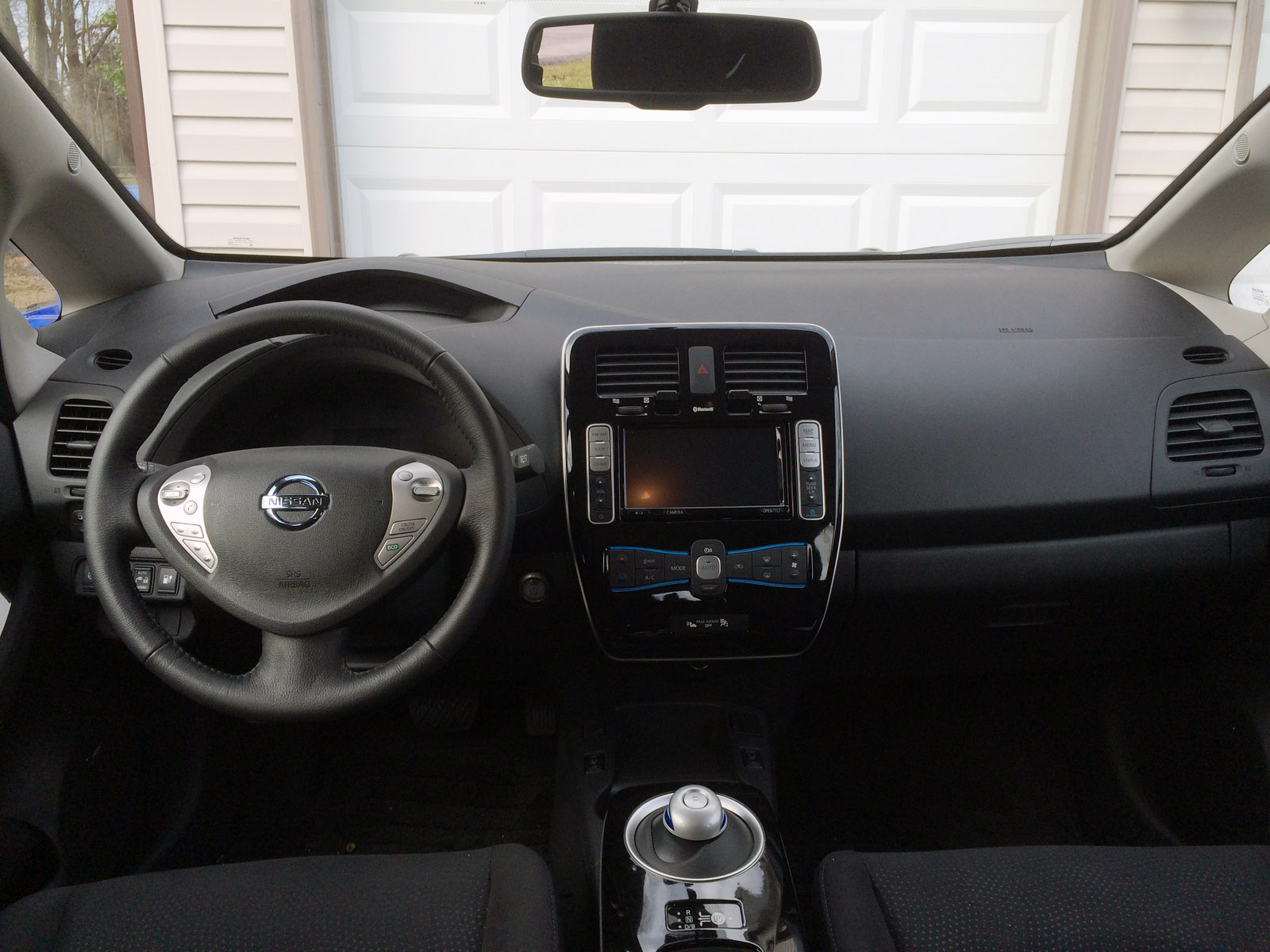
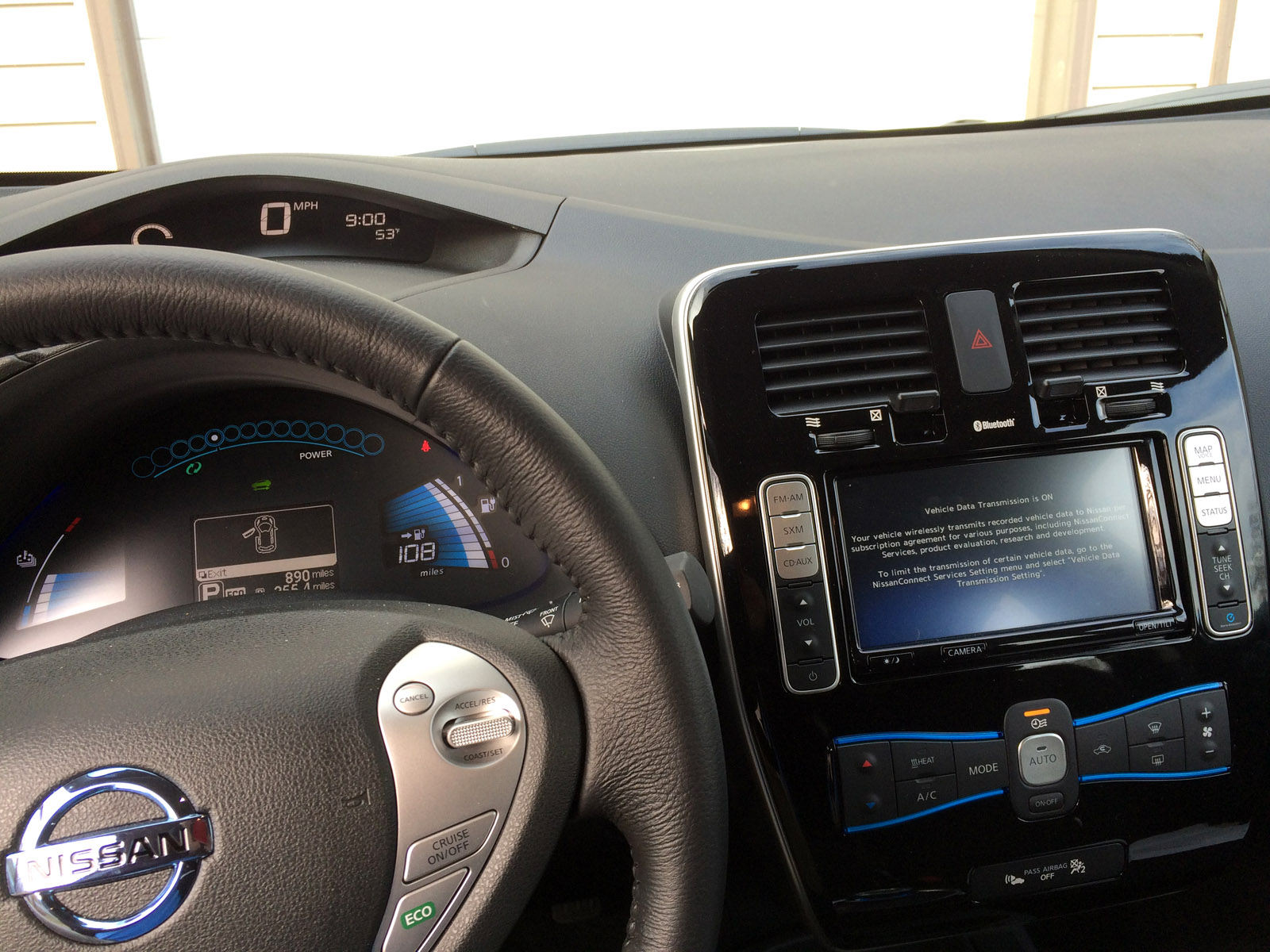

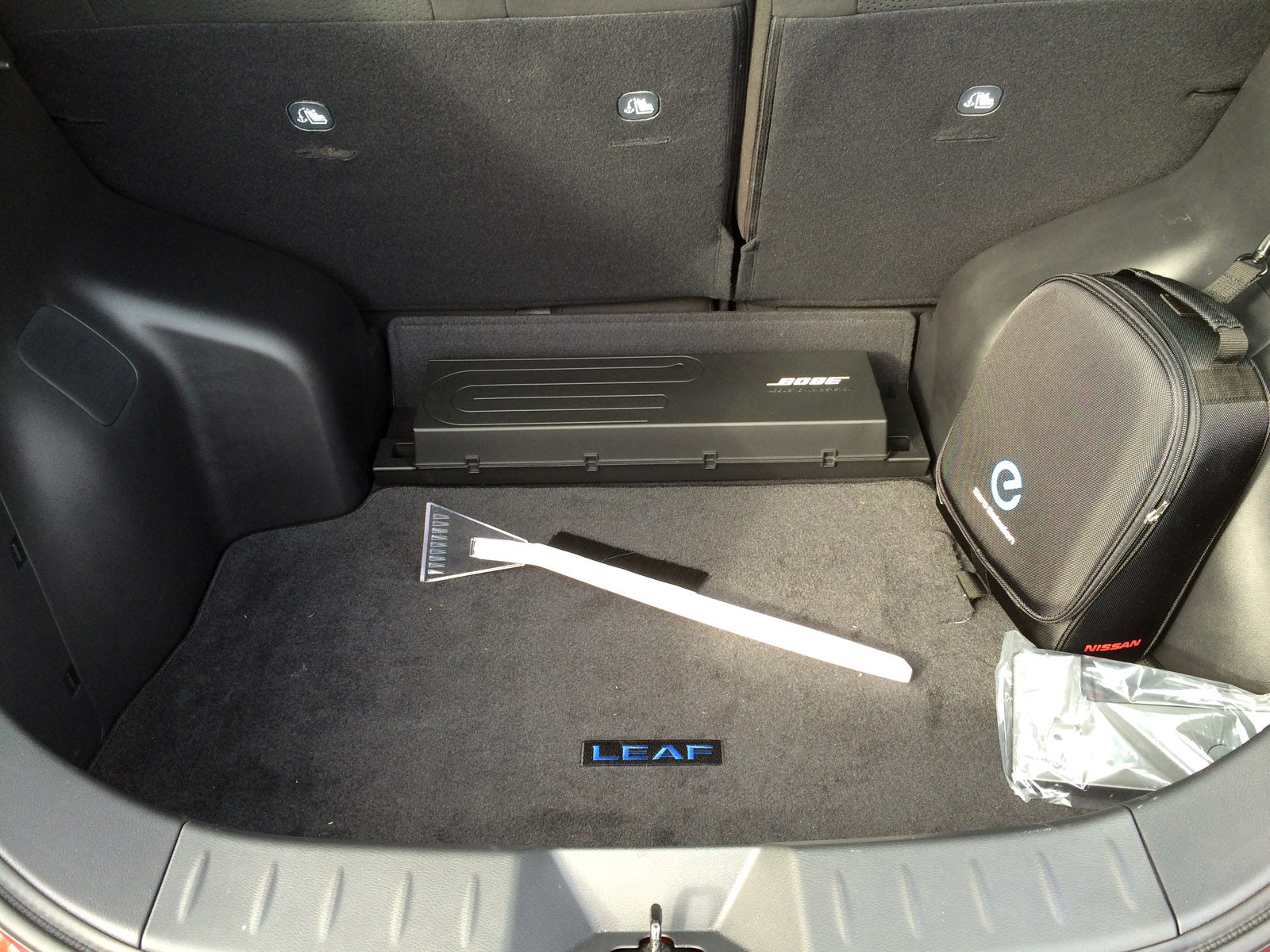
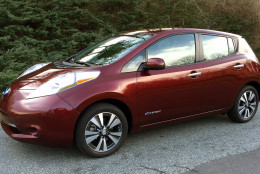
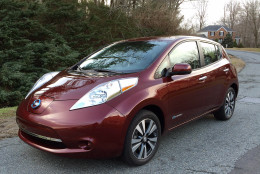
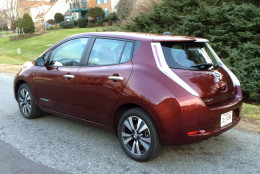
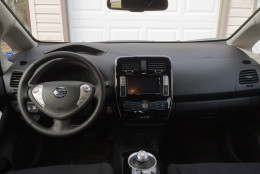
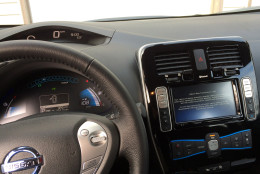
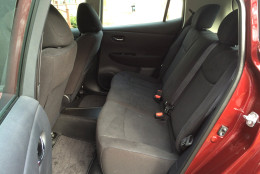
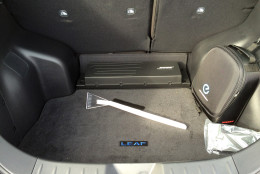
WASHINGTON — The 2016 Nissan Leaf SV has improved range, thanks to a larger battery pack that now comes standard for this particular model.
While the base S-trim Nissan Leaf can travel up to 84 miles on a charge, the SV and SL trim levels can reach 107 miles before the batteries need to be charged. The Leaf has been around for six years now, so this longer range will help in an electric car class that’s more crowded now than when the Leaf launched.
I spent a week with the midrange Nissan Leaf SV, and I did a decent amount of driving — about 355 miles on the highway and in the city. The best way to help range is to limit nonstop highway driving, as it quickly drains the Leaf’s batteries. But stop-and-go traffic is its friend — applying the brakes helps recharge the battery some.
I did manage 96 miles on a single charge and still had a few miles left over. A 240-volt charger is needed if you plan to buy one, as the base charger takes up to 18 hours to charge. Nissan dealers usually have a higher speed charger, but the dealer I went to had cars parked in front of the charger, making it hard to use.
The Leaf is a quiet car with no engine noise and just a slight whine of the electric motor. Only at highway speeds do you hear the wind and some road noise, but nothing major.
Cruising in the city, the Leaf feels punchy up to 30 mph, but it feels sluggish at faster speeds. Most cars have an ECO button, and usually you don’t notice much of a difference. But this one really restricts the power. The brakes feel like the brakes in a gas-powered car without the strange vibrations or even lack of sensation common among electric cars.
The Nissan Leaf has a distinctive look with raised bug-eye headlights. Even after being on the scene for a while now, it still stands out in a crowd. The door to the charger ports lies up front, where the Nissan emblem sits. The Leaf now features two ports under the door: one regular and a new quick-charge port.
This is a compact car, but it does have 17-inch wheels. They are somewhat stylish alloy wheels, and don’t feature some strange design like on some other EV cars. The rear styling is also different, with long lights and more extreme angles than many cars on the road today. The top-level SL trim even has a solar panel in the roof to help run some of the accessories and save you a bit of the battery.
Think economy car, and not a $36,800 price tag, when it comes to the interior — it’s more in line with a cheaper ride. You do get heated seats and a leather-wrapped steering wheel, but most of the materials are economy car grade, with more hard plastics. Still, it looks more modern than most, with something that reminds you of a “Star Trek” device for a shifter.
The Leaf comes with a split-level instrument cluster that separates the speedometer from the rest of the gauges. The navigation screen is a good size at seven inches and the around view monitor, which offers a 360-degree view around the car, is a nice touch — helpful when backing in and out of tight spaces. I did seem to hit the wrong buttons on the center console sometimes, as they all look about the same. The map and menu buttons are the ones I usually confused.
The Leaf provides ample head and leg room, even in the rear passenger seats. The batteries are mounted low in the car, so cargo space is ample for an electric car. In some hybrid and electric cars, the battery takes up most of the trunk space, leaving little room for cargo.
The Nissan Leaf is now a more usable EV, with a greater range in the higher trim levels so you can drive further and worry a little less about the range. With tax rebates and other incentives, the price comes down for any drivers want to enter a no-gas world.
Mike Parris a member of the Washington Automotive Press Association. The vehicles are provided by STI, FMI or Event Solutions for the purpose of this review.

